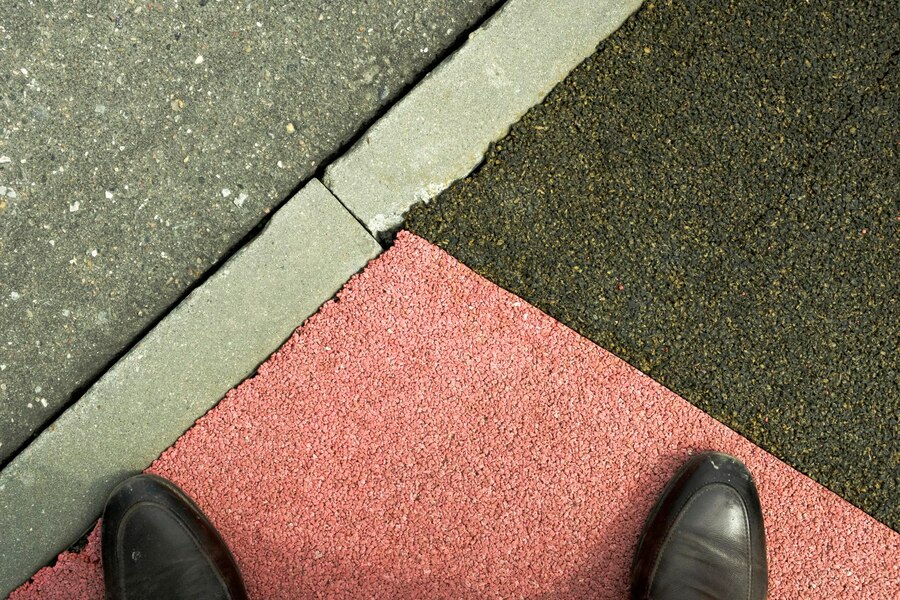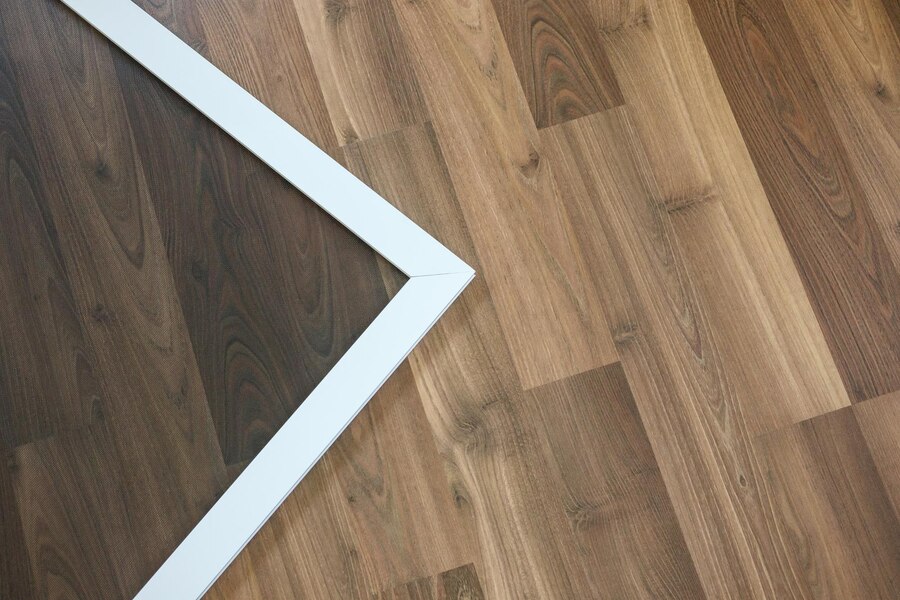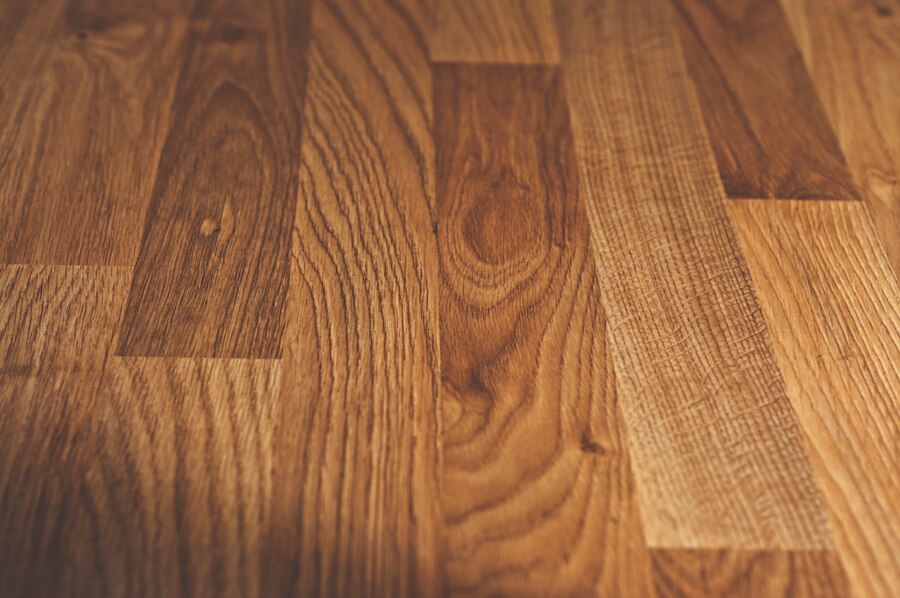What is the Best Flooring for Wheelchair Users?
25 Jun, 2024
Ensuring accessibility for disabled individuals and people with mobility impairments is one of the crucial factors that must be considered while planning, projecting, and constructing any home, facility, or institution. Moreover, the right flooring coverage can ensure smooth mobility and enhance safety and comfort for everyone in the house. Let’s delve into the considerations and options to take into account to pick the best flooring for wheelchair users.

What is the ADA?
The first and the most significant source of recommendations and standards for accessibility in public and commercial spaces is the Americans with Disabilities Act (ADA). Among others, it also includes guidelines for flooring, which, though only sometimes applicable to residential spaces, can offer valuable insights into creating a wheelchair-friendly environment. Some of the flooring features emphasized in ADA include:
- slip resistance;
- smoothness;
- durability;
- others.
Factors to Consider When Selecting Wheelchair-Friendly Flooring
Here’s the list of the cheapest patio flooring ideas with pros and cons to help you choose the best surface for your outdoor space.
Durability
First and foremost, it is crucial to ensure your flooring material is durable and can withstand significant pressure exerted by wheelchair movement. Opting for materials known for maintaining their properties even in high-traffic areas without deforming is recommended.
Smoothness
Rough or uneven surface areas can detract from wheelchair users’ maneuverability, which is already constrained. Such surfaces can impede their movements, leading to loads of discomfort. Choose flooring with smooth flooring to facilitate wheelchair mobility.

Slip Resistance
Slip-resistant flooring is essential to prevent accidents, particularly in areas with extensive moisture or spills. Look for materials with decent traction to minimize the risk of slips and falls and maximize the comfort of movement.
Maintenance
It is strongly recommended to pick low-maintenance flooring materials that don’t require frequent cleaning and upkeep. We advise you to pick surfacing that will be easy and fast to clean and maintain while not compromising on quality, durability, and other essential features.
Best Flooring Options for Wheelchair Users
Engineered Wood Flooring
Engineered wood can be an excellent choice for any flooring, combining natural and aesthetic looks with outstanding durability and being able to withstand the pressure of wheelchair movement easily. In addition to that, engineering wood’s smooth surface is perfect for maneuverability and doesn’t call for complicated maintenance. Moreover, wood is an incredibly versatile option for various rooms, including bedrooms and living rooms. However, there are a few caveats for those who decide to pick EW flooring:
- Cost: most wood flooring projects are more expensive than other materials, averaging $6 to $12 per square foot.
- Water damage: if it is not sealed correctly, engineered wood floors are highly susceptible to water damage, making them not the best choice for kitchens, bathrooms, laundry rooms, etc.
Rubber Flooring
Rubber has become practically the best flooring for power wheelchairs due to its durability, shock- and slip-resistance, absorption, and low maintenance. Rubber is practically invulnerable to shock heavy foot- and wheelchair traffic, keeping its integrity even in the most challenging conditions. Moreover, it is exceptionally water-repellant, meaning it won’t warp from bumps or dents after getting wet. In addition, the rubber’s surface is ideal for wheelchair users because of how smooth yet textured it is, providing great movability and traction. However, it is crucial to mention that rubber flooring has certain drawbacks. First, while it is suitable for both indoor and outdoor environments, its design options are limited compared to other materials and, in fact, allow for only different colors. In addition, rubber can be more expensive than other options, although it pays back in the long run due to its durability and low maintenance.
Low-Pile Carpet Flooring
If you want to ensure a room’s comfort and cozy atmosphere while having wheelchair-friendly flooring, low-pile carpets are your choice. Most of them are soft and warm underfoot, being pleasant to walk on while making for wheelchair-accessible flooring due to how short their pile is. In addition to that, they can come in various colors, patterns, and styles, fitting practically any interior design. Moreover, if you live in an apartment, carpets can help with sound insulation, helping create a more home-like environment. However, they can be relatively high-maintenance, requiring regular vacuuming to prevent the buildup of debris or dust particles, which can trigger allergies. Moreover, there might be better options for high-traffic areas due to their relatively low durability.
Laminate Flooring
One of the most common alternatives to hardwood is laminate flooring, which has shown to be an excellent choice for budget-conscious homeowners who want to ensure comfort and pick one of the best floorings for wheelchairs. First and foremost, laminate is among the most affordable options while offering superior durability and resistance to scratches, dents, and stains. Moreover, it is smooth, allowing for admirable wheelchair maneuverability. To top it all off, laminate is available in various designs, from natural wood and stone to tiles. Still, it is vital to mention that laminate is sensitive to installation and upkeep, leading to extensive moisture damage if not installed or maintained correctly. In addition to that, bare laminate tends to produce a loud hollow sound when walked on.
Bamboo Flooring
Last but not least, you can go for bamboo flooring, which offers countless advantages in wheelchair-accessibility. Its durable texture makes the surface invulnerable to scratches and dents while being smooth enough to ensure great movability and make it one of the best floorings for wheelchairs. In addition to that, bamboo is a natural material, offering unique aesthetics to any living space while remaining sustainable and eco-friendly. However, it inherits the drawbacks of a hardwood floor, meaning that it is more expensive than most synthetic options and is vulnerable to moisture damage if not sealed properly.

Flooring Types To Avoid
Tile Flooring
One might think that tile flooring is an excellent option for wheelchair users due to how smooth it is. In reality, the situation is the opposite – most tiles have flossy finishes, which are too slippery and hazardous for wheelchair users. In addition to that, ground lines create uneven surfaces, which may be an obstacle to wheelchair movement. To top it all off, tiles could be better even for non-impaired people due to their cold and hard surface.
Rugs
Rugs have been shown to be among the worst possible flooring options for wheelchair users. First and foremost, their corners tend to not be secured, creating a risk of tripping, especially relevant for wheelchair users. Moreover, depending on the rug’s texture, it can impair wheelchair movement even more, making moving on it practically impossible. In addition, maintenance of such surfaces is exceptionally demanding, calling for regular vacuuming, cleaning, and annual washing (depending on the extent of traffic).
Thick Pile Carpets
Thick pile carpets share the same wheelchair accessibility and general comfort issues as rugs. Although they are warm and soft and don’t have issues with edges, these carpets tend to accumulate insane amounts of dust, allergens, and debris, requiring even more frequent cleaning. In addition, the deep pile texture of such carpets causes many more struggles for wheelchair movement.
